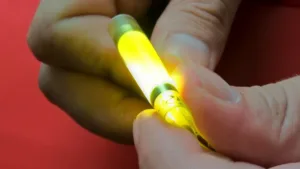Researchers from Holst Centre claim to have solved a major challenge in creating large-area displays for portable devices, demonstrating a new protective barrier for organic electronics that is foldable and allows high-temperature processing of display backplanes on top.
Holst Centre’s new optimised barrier comprises an organic layer sandwiched between two layers of silicon nitride. Holst Centre’s scientists claim to have been able to control its mechanical properties and create a flexible barrier that ensures the neutral stress line during bending is close to the active layers of the display to prevent mechanical and electrical degradation. The organic material also helps prevent moisture penetration through pinholes by ensuring very slow lateral spreading of water between the SiN layers.
The particular organic material used is stable up to 400°C and can be applied by slot-die coating. This allows the SiN layers to be deposited at 350°C, in a bid to improve their quality and ability to prevent water penetration. The barrier is designed to withstand the high temperatures used in display production processes, making it suitable for the bottom protective layers. Hylke Akkerman, Program Manager at Holst Centre, said:
“Foldable displays are a hot topic right now, with many people claiming to demonstrate them. But the term is applied quite loosely, and very few – if any – of these demonstrators achieve the bending radii of 2mm or less needed to be truly foldable. Our optimised multi-layer barrier now makes foldable OLED displays possible. Not only does it enable very small bending radii, it is compatible with standard display production processes and provides excellent protection against water and stress for long-lasting displays”
OLED demonstrators using the new barrier claim to have achieved 1000 hours with no black spots in accelerated lifetime testing, even after ten thousand cycles of folding with a bending radius of 0.5mm. This represents an operational lifetime of several years. With earlier versions of the barrier already deployed in its own 1G pilot production line, Holst Centre is currently transferring this latest barrier to a production at a partner’s facility.

